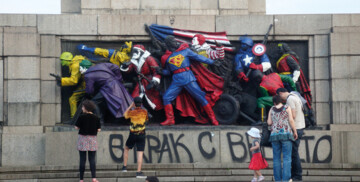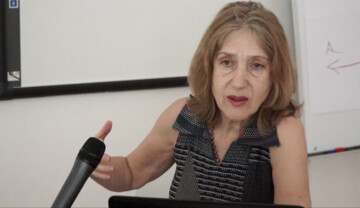“Heterotopian homonymy” designates a reversal in the meaning of key theoretical and political concepts – and, by extension, of the political implications of artworks - due to geopolitical divisions and the traffic of fantasies of the Other that such divisions involve. Foucault compares heterotopia to a mirror: I gaze at the mirror in order to find out how I look; by returning the gaze the mirror exerts a counter effect; it influences my stance and prompts me to undertake certain actions with regard to my appearance; that is, it forces me to change in response to it; I become its reflection. The Cold War era can serve as an example of this specular turn with heterotopian homonyms representing, inverting, and challenging each other. Thus, abstract expressionism transmitted on one side of the mirror the fantasy of creative freedom, and on the other – the fantasy of non-alienated creativity. A striking case of such a doppelgänger encounter is provided by Nicolas Guilhot’s study of the genealogy of “transition” from Marx to its Stalinist interpretations, on the one hand, and to Western modernization theory, on the other, and of the ensuing conceptual collapse in the post-Cold War “transition to democracy”. Sometimes productive and sometimes destructive, the effects of such mirroring, while they last, and after they vanish, demand consideration.




